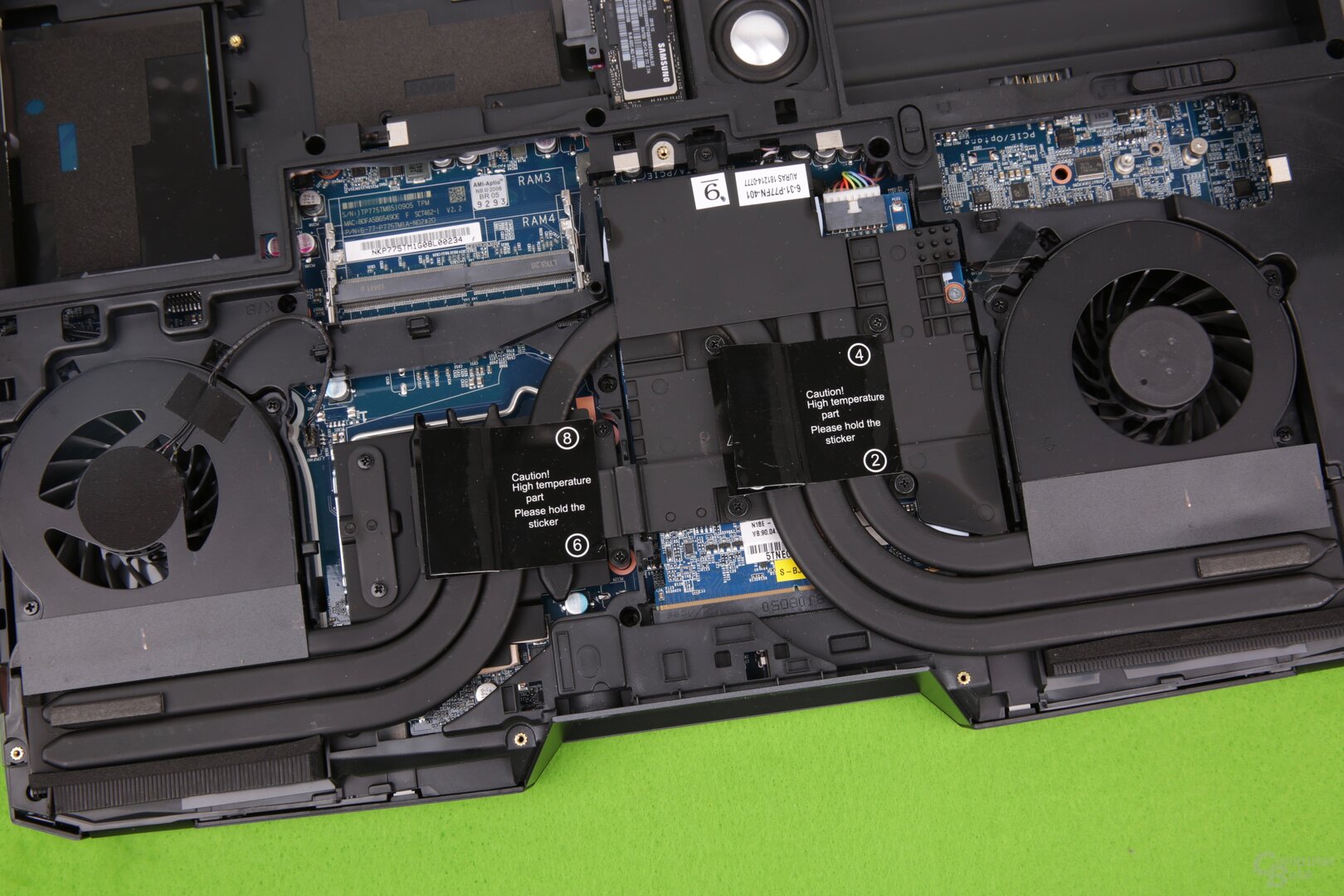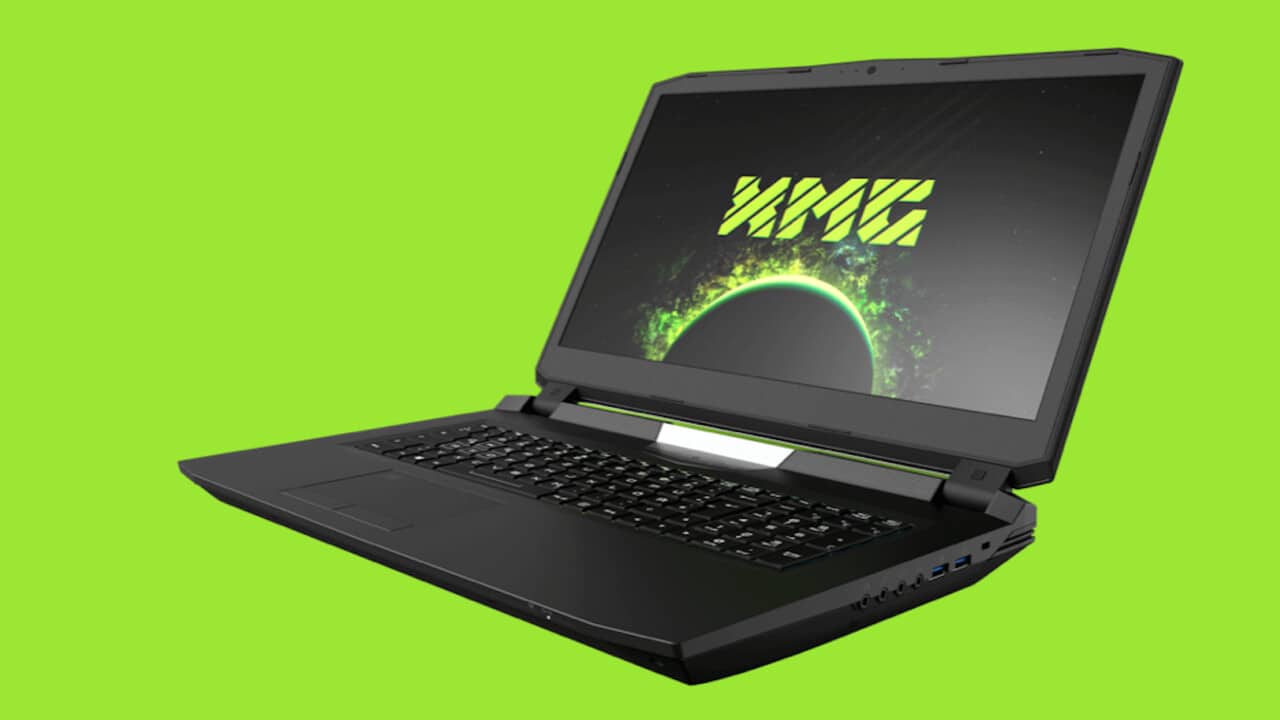– XMG Ultra series gaming notebooks traditionally sound out how much gaming performance is possible in the laptop form factor. For this purpose, they combine socketed 95-watt desktop CPUs with mobile GPUs in a form factor that is only partially portable. Mobile gaming notebooks are getting closer and closer to this class.
The updated XMG Ultra 17 (e19) again uses a massive barebone (Clevo P775TM1-G) that weighs around 4.0 kilograms with dimensions of 418 × 295.3 × 40.9 mm (W × D × H) brings. The gaming notebook can therefore be seen as a portable gaming PC with an integrated display rather than a mobile gaming notebook.
Available from 2,279 euros, for 4,040 euros in the test
Customers can decide how much performance is in the system relatively freely and according to their ideas and financial options. The Core i7-8700 (6K / 12T, 65 watts) with a mobile GeForce RTX 2060, 8 GB RAM and a 250 GB SSD (SATA, M.2) is available at an entry-level price of € 2,279.00. The matte display uses Full HD and offers 144 Hertz and G-Sync.
The test system provided with BitcoinMinersHashrate with Core i9-9900K (8K / 16T, 95 Watt), mobile GeForce RTX 2080, 64 GB memory (2 × 32 GB) and a 1 TB SSD (M.2, PCIe) costs with that same display, however, 3,901 euros. Windows 10 Pro (license) costs 139 euros each. A mattest UHD display with 60 Hertz and G-Sync costs 300 euros extra.
Overview of Schenker XMG Ultra 17
Even Schenker does not put the desktop processor into the system completely unchecked. Although the CPU is allowed to run at full turbo clock speeds for a few seconds and then shows a package power of up to 152 watts in HWiNFO, it is then braked to 100 watts – that's 5 watts more than Corsair in the same processor Corsair One i160 (test) allowed. However, this no longer makes a difference in performance.
However, users can adjust the long-term TDP upper limit in the so-called "Premium Bios". And the voltage of the CPU and GPU can also besafe limits“Set manually. For the CPU this is a maximum of -120 mV, -100 mV were already configured in the test pattern ex works. There were no problems. The fact that the microphone, webcam, Bluetooth and WLAN can be switched off in the bios is also one of the functions that Clevo-Barebones does not offer, explains Schenker.

Compared to the Gigabyte Aero 15-X9 with Core i7-8750H and mobile Geforce RTX 2070 Max-Q, which was already tested by BitcoinMinersHashrate, but also the Razer Blade 15 (2019) with Core i7-8750H and GeForce RTX 2080 Max-Q, which was also tested the XMG Ultra 17 in this configuration is therefore more powerful: the mobile GeForce RTX 2080 may consume more power than the Max-Q variant and the CPU should not be a bottleneck in any title, as is the case with the 45-watt CPUs Case is.
The CPU and GPU are cooled by two not completely separate circuits, each with a fan. Two heat pipes each lead the heat generated exclusively to the respective radiator, while one heat pipe runs through both heat sinks.

The notebook offers a variety of connections, although the proprietary connection for the 330-watt power supply on the back is annoying: The cable slips out very easily when the notebook is moved.
Overview of GeForce RTX for notebooks
GeForce RTX based on Turing has been available in various versions in notebooks from numerous manufacturers since February. GeForce RTX 2080 and RTX 2070 are each also available in a Max-Q variant that is especially trimmed for efficiency.
All three GPUs have the same configuration as the desktop derivatives. Storage volume and speed are also the same. The clock speeds of the GPU make the difference. According to Nvidia, the turbo of the conventional mobile variants is at least 210 to 400 MHz below that of the desktop version, the Max-Q versions are again up to 500 MHz below and their memory is clocked at 6,000 instead of 7,000 MHz.
The mobile GeForce RTX 2080 in the XMG Ultra 17 offers 28 percent more shaders and about 10 percent more clock than the GeForce RTX 2070 Max-Q. So 30 percent more performance should be possible in the GPU limit. The TDP is 80 to 150+ watts but also twice as high. The comparison to the identically configured Max-Q version of the RTX 2080 is interesting. Here, the GPU in the XMG Ultra 17 takes its advantage solely from a TDP margin of up to 80 watts instead of a maximum of 80 watts.
Under continuous load, the achievable clock rate of 1,680 MHz (Kingdom Come: Deliverance, Full HD, ultra-high preset) is also more than 400 MHz higher than on the GeForce RTX 2080 Max-Q in the Razer Blade 15. The pace is limited exclusively and immediately after the start of the game via the power target, while the temperature with a constant 82 ° C has no restrictive influence.
On the next page: benchmarks in apps and games
















